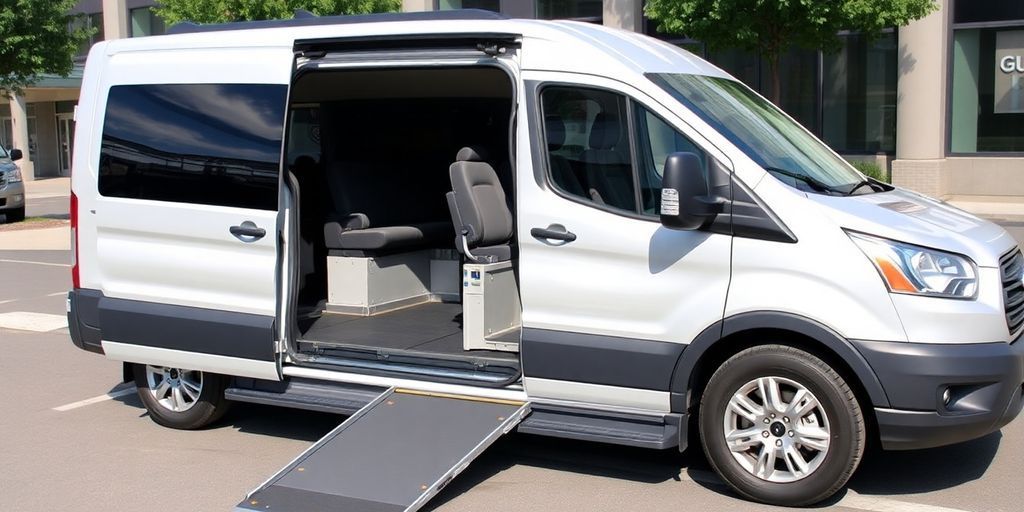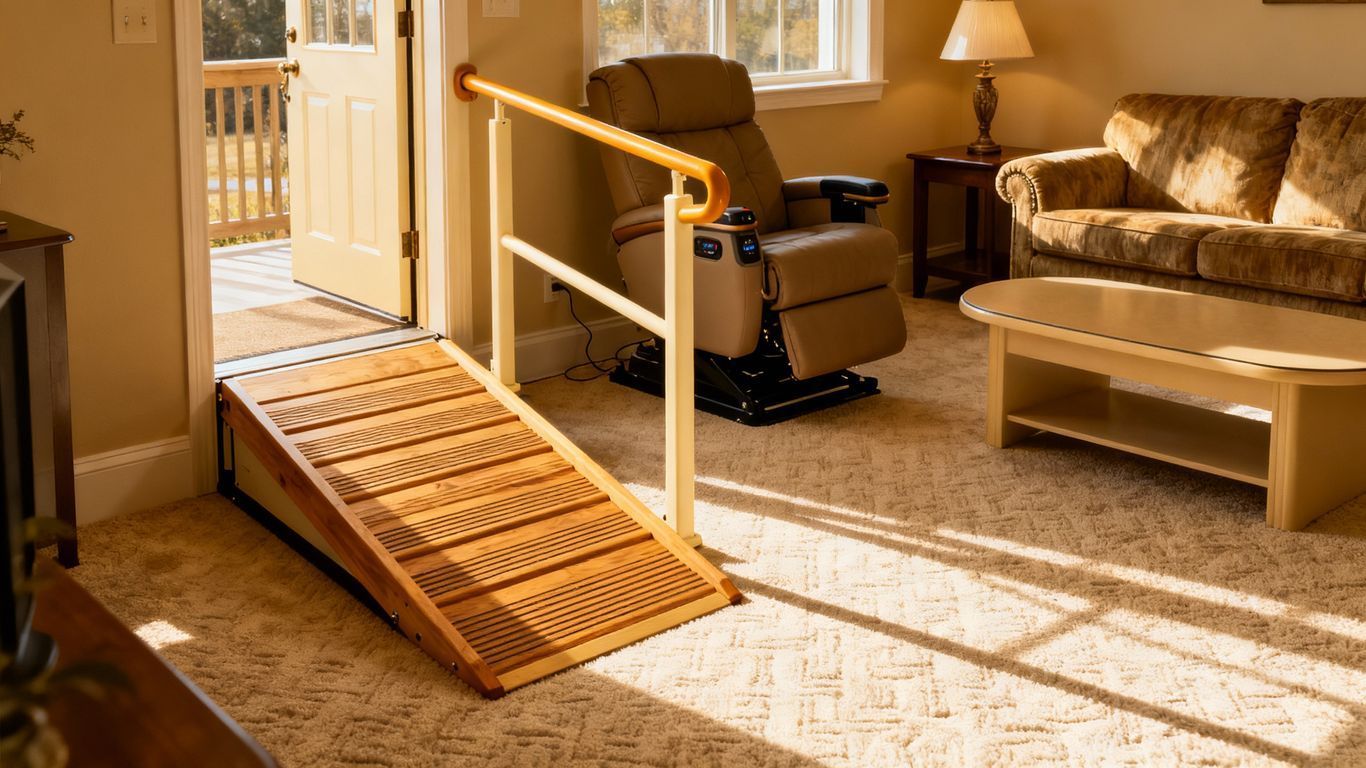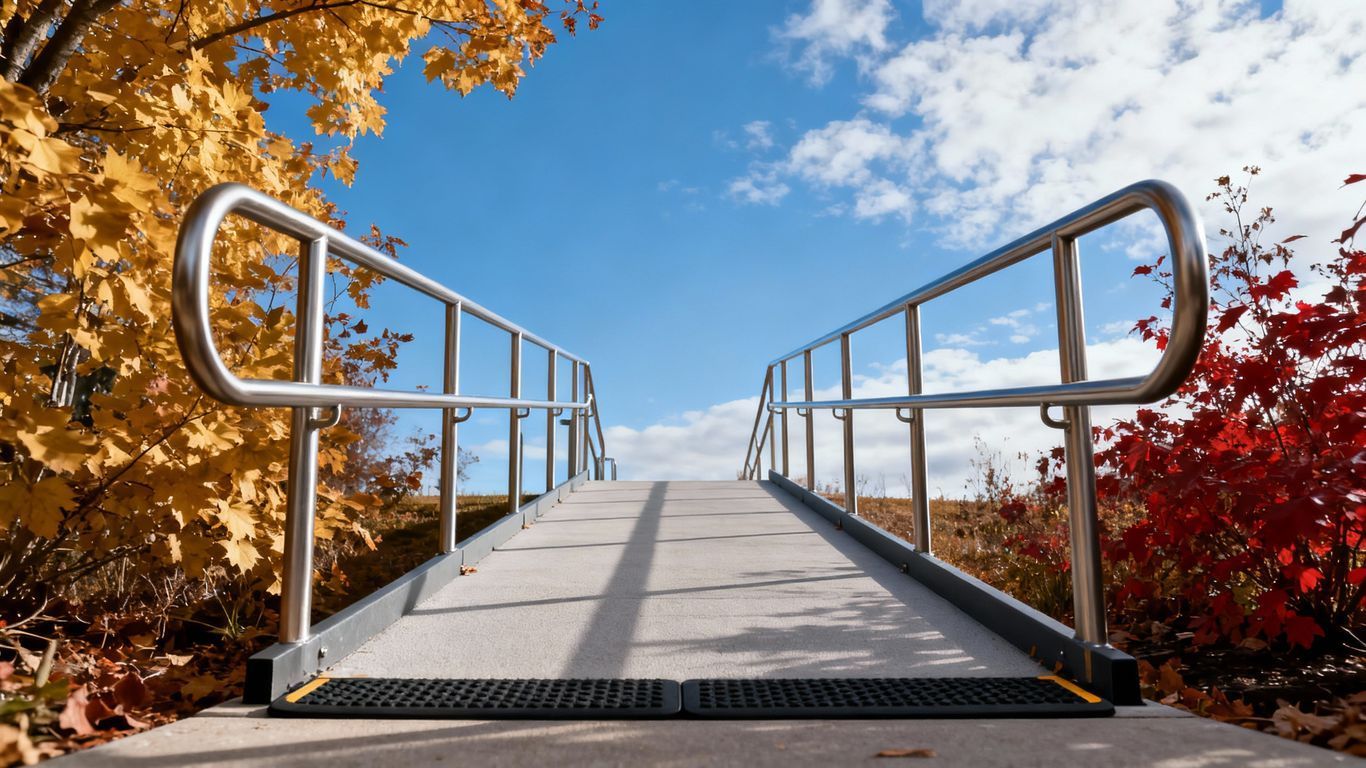Wheelchair Van Conversions in Chattanooga: What You Need to Know Before You Buy


If you're considering a wheelchair van conversion in Chattanooga, there’s a lot to think about. From understanding the different types of conversions to figuring out financing options, it can feel overwhelming. This guide breaks down everything you need to know to make an informed decision. Whether you're looking for a new or used van, understanding the available options can make the process smoother and help you find the right fit for your needs.
Key Takeaways
- Explore various types of wheelchair van conversions available in Chattanooga.
- Consider the benefits of customizing your van to suit your specific needs.
- Evaluate new versus used wheelchair vans based on your budget and requirements.
- Look into financing options and insurance coverage for your wheelchair van conversion.
- Research local conversion services and read customer reviews to find reliable providers.
Understanding Wheelchair Van Conversions Chattanooga
Types of Conversions Available
When you're looking at wheelchair van conversions in Chattanooga, it's good to know there are a few main types. The most common are side-entry and rear-entry conversions. Side-entry vans have a ramp or lift that allows wheelchair access through the side door, which is great for parking in tight spots. Rear-entry vans, on the other hand, offer access through the back of the van. The type you choose often depends on your specific needs and lifestyle.
Here's a quick rundown:
- Side-Entry: Easier access in parking spaces, more common.
- Rear-Entry: Can be more affordable, sometimes limited maneuverability inside.
- Full-Cut vs. Drop Floor: Affects interior headroom and ease of access.
Benefits of Custom Conversions
Getting a custom wheelchair van conversion can really change your life. It's all about tailoring the van to your exact needs. Instead of settling for a one-size-fits-all solution, you get a vehicle that works perfectly for you. This might include things like specialized seating, hand controls, or extra space for equipment.
Here are some benefits:
- Personalized comfort and accessibility.
- Accommodates specific medical equipment.
- Improved independence and quality of life.
Safety Features to Consider
Safety is super important when it comes to wheelchair vans. You want to make sure the conversion includes all the necessary safety features to protect you and your passengers. This includes things like secure tie-down systems for wheelchairs, properly installed mobility equipment, and reliable ramps or lifts.
Make sure to ask about safety certifications and crash testing. It's also a good idea to check the reputation of the conversion company and read reviews to see what other customers say about their safety standards. Don't skip on safety to save a few bucks.
Consider these safety aspects:
- Wheelchair tie-down systems (electronic or manual).
- Certified installers and conversions.
- Emergency exits and safety features.
Choosing the Right Wheelchair Van
New vs. Used Options
Okay, so you're in the market for a wheelchair van. One of the first big decisions is whether to go with a new or used model. New vans come with the latest features, warranties, and that new car smell, of course. But, they also come with a hefty price tag. Used vans, on the other hand, can be much more budget-friendly. The key is to do your homework. Check the van's history, get it inspected by a trusted mechanic, and be realistic about what you're getting for the price. You might find a gem that saves you a ton of money, or you might end up with a money pit. It's a gamble, but one that can pay off if you're careful.
Evaluating Your Needs
Before you even start looking at vans, sit down and really think about what you need. What are your daily requirements? How many passengers do you need to accommodate? Do you need a side-entry or rear-entry ramp? What about headroom? Do you need extra space for equipment or luggage? Consider these points:
- Ramp or Lift: Which is better for your situation?
- Seating Configuration: How many additional passengers will you regularly transport?
- Vehicle Height: Will you be comfortable with the interior height for transfers and mobility?
It's easy to get caught up in the bells and whistles, but focus on the essentials first. A van that looks great but doesn't meet your practical needs is just going to be a source of frustration. Think about your lifestyle and how the van will fit into it.
Popular Models in Chattanooga
In Chattanooga, you'll find a few models that are pretty popular for wheelchair conversions. Wheelchair accessible vans from manufacturers like Dodge, Chrysler, and Toyota are common. These vans are often chosen because they offer a good balance of reliability, space, and affordability. The specific conversion type (side-entry or rear-entry) can also influence the model's popularity. It's a good idea to visit a local dealer and check out a few different models in person to see what feels right for you. Don't be afraid to ask questions and take your time making a decision. Consider the financing options available to you as well.
Financing Your Wheelchair Van Conversion
Buying a wheelchair van is a big deal, and figuring out how to pay for it can feel overwhelming. Don't worry, though! There are several avenues to explore to make it more manageable. Let's break down the costs, financing options, and insurance considerations so you can make an informed decision.
Understanding Costs
First, let's talk money. The price of a wheelchair van conversion can vary quite a bit depending on the type of conversion, the features you want, and whether you're buying new or used. New vans with conversions will naturally cost more upfront. Used vans can be more budget-friendly, but might require more maintenance down the road. Consider these factors:
- Type of Conversion: Side-entry conversions often cost more than rear-entry ones.
- Additional Features: Power ramps, specialized seating, and other modifications will add to the total cost.
- Vehicle Age and Mileage: Older vans with higher mileage will typically be less expensive, but might come with higher repair costs.
It's a good idea to get quotes from several conversion companies and dealers to compare prices and find the best deal. Don't forget to factor in taxes, registration fees, and insurance costs when calculating your total budget.
Available Financing Options
Okay, so how are you going to pay for this? Luckily, there are several financing options available to help make a wheelchair van conversion more affordable. Here are a few to consider:
- Loans: Many banks and credit unions offer loans specifically for adapted vehicles. Shop around for the best interest rates and terms.
- Grants: Several organizations and government agencies offer state grants to help individuals with disabilities purchase accessible vehicles. Check with your state's Department of Vocational Rehabilitation or disability services agencies.
- Manufacturer Rebates: Sometimes, conversion companies or vehicle manufacturers offer rebates or incentives to help lower the cost.
Don't be afraid to explore all your options and see what works best for your situation. You might even be able to combine multiple funding sources to make it more manageable.
Insurance Considerations
Finally, let's talk insurance. Insuring a wheelchair van is a bit different than insuring a standard vehicle. You'll need to make sure your policy covers the modifications and equipment in the van. Here are a few things to keep in mind:
- Specialized Coverage: Make sure your policy covers the cost of repairing or replacing the conversion equipment, such as ramps, lifts, and specialized seating.
- Liability Coverage: Ensure you have adequate liability coverage to protect yourself in case of an accident.
- Insurance Agent: Work with an insurance agent who has experience with adapted vehicles. They can help you find the right policy to meet your needs and budget.
Finding Reliable Conversion Services
Finding the right company to handle your wheelchair van conversion is a big deal. You want someone you can trust, who does good work, and who will be there for you if something goes wrong. It's not just about getting the conversion done; it's about getting it done right.
Top Conversion Companies in Chattanooga
Okay, so where do you even start looking? Well, Chattanooga has a few companies that specialize in wheelchair van conversions. Do your homework. Check out their websites, see what kind of vans they work on (side entry, rear entry, etc.), and read about their process.
Here's a few things to consider:
- Experience: How long have they been doing conversions?
- Certifications: Are they certified by any national organizations?
- Types of Conversions: Do they offer the specific type of conversion you need (e.g., side-entry, rear-entry, full-cut, lowered floor)?
Customer Reviews and Testimonials
Customer reviews are your friend. Don't just rely on what the company says about themselves. Look for reviews on Google, Yelp, and the Better Business Bureau. See what other people's experiences have been like.
Consider these points when reading reviews:
- Pay attention to recurring themes – are people consistently praising or complaining about the same things?
- Look for reviews that are detailed and specific, rather than generic.
- Take both positive and negative reviews with a grain of salt – no company is perfect, and some people are just hard to please.
It's also a good idea to ask the conversion company for references. Talking to past customers can give you a real feel for what it's like to work with them.
Warranty and Support Services
Before you sign anything, make sure you understand the warranty. What does it cover? How long does it last? What's the process for making a claim? A solid warranty shows that the company stands behind its work. Also, find out what kind of support services they offer after the conversion is complete. Can you call them with questions? Do they offer maintenance services? Knowing you have ongoing support can give you peace of mind. Make sure they offer mobility equipment and can help you with any issues that may arise.
Maintenance and Care for Your Wheelchair Van
Routine Maintenance Tips
Keeping your wheelchair van in top shape doesn't have to be a headache. Think of it like any other vehicle, but with a few extra things to keep an eye on. Regular check-ups are key to preventing bigger problems down the road.
- Check tire pressure monthly. Proper inflation improves fuel economy and extends tire life.
- Inspect all lights regularly. Make sure headlights, taillights, brake lights, and turn signals are working correctly.
- Keep fluids topped off. This includes engine oil, coolant, brake fluid, power steering fluid, and windshield washer fluid.
A little preventative maintenance goes a long way. Addressing small issues early can save you time and money in the long run. Plus, it keeps your van running smoothly and safely.
Common Repairs and Issues
Okay, let's be real – things break. With wheelchair vans, some issues pop up more often than others. Knowing what to look for can help you catch problems early. One common issue is with the wheelchair ramp or lift. These can sometimes get finicky, especially with heavy use.
- Ramp or lift malfunctions: These can range from slow operation to complete failure. Regular cleaning and lubrication can help prevent this. Consider annual inspections of wheelchair ramps and lifts at a service center.
- Electrical problems: Wheelchair vans have more electrical components than standard vans. Keep an eye out for blown fuses or wiring issues.
- Suspension issues: The added weight of conversion equipment can put extra stress on the suspension. Listen for unusual noises or a bumpy ride.
Finding Service Centers in Chattanooga
Finding a good service center is super important. You want someone who knows their way around wheelchair vans and can handle any repairs or maintenance you need. Start by asking around. Local support groups or other wheelchair van users can often recommend reliable mechanics. You can also check online reviews, but take them with a grain of salt. Look for shops that specialize in wheelchair van conversions or adaptive equipment.
- Ask for recommendations from local support groups.
- Check online reviews, but be critical.
- Look for shops specializing in adaptive equipment.
Selling or Trading Your Wheelchair Van
How to Prepare Your Van for Sale
So, you're thinking about selling or trading in your wheelchair van? Makes sense! Maybe your needs have changed, or you're just ready for something new. First things first, get your van ready to make a good impression. Think of it like selling a house – curb appeal matters!
- Clean it thoroughly: Inside and out. A sparkling clean van shows you've taken good care of it. Don't forget to shampoo the carpets and wipe down all surfaces.
- Address any minor repairs: Fix that wonky door handle, replace burned-out light bulbs, and top off fluids. Small things can make a big difference.
- Gather all your paperwork: Service records, modification documentation, and the original owner's manual. Having everything organized builds trust with potential buyers.
Consider getting a pre-sale inspection. Knowing the van's condition upfront can help you price it accurately and avoid surprises during negotiations. Plus, it shows buyers you're transparent and honest.
Understanding Trade-In Values
Okay, let's talk numbers. Figuring out the trade-in value of your wheelchair van can be tricky. It's not like trading in a regular car. Several factors come into play, including the van's age, mileage, condition, and the type of conversion it has.
- Research similar vans: See what similar models are selling for in your area. Online marketplaces and mobility dealerships can give you a good starting point.
- Get multiple appraisals: Don't settle for the first offer you receive. Get quotes from several dealerships specializing in wheelchair accessible vans.
- Be realistic: Remember that dealerships need to make a profit, so their trade-in offer will likely be lower than the private sale value.
Where to Sell Your Van
Now, where do you actually sell this thing? You've got a few options, each with its own pros and cons.
- Mobility dealerships: These dealerships specialize in accessible vehicles and often have a network of buyers looking for used vans. They can handle the entire sales process, but their commission will affect your final payout.
- Online mobility classifieds: Websites dedicated to mobility equipment can connect you directly with potential buyers. This gives you more control over the price, but you'll need to handle the sales process yourself.
- Private sale: Selling directly to an individual can potentially get you the highest price, but it also requires the most effort. You'll need to handle advertising, showings, and negotiations.
Consider advertising in local support groups or disability organizations. These groups often have members actively seeking accessible transportation. You can also fill out a sell your van questionnaire to get a quote.
Community Resources for Wheelchair Van Users
Local Support Groups
Finding a community can make a huge difference when you're navigating life with a wheelchair van. It's about connecting with people who understand the challenges and celebrate the victories.
Here's what to look for in local support groups:
- Shared Experiences: Groups where members openly discuss their experiences with wheelchair vans, from maintenance tips to travel stories.
- Resource Sharing: A network for sharing information about local services, repair shops, and accessible venues.
- Emotional Support: A safe space to talk about the emotional aspects of mobility and accessibility.
Support groups can be a lifeline, offering practical advice and a sense of belonging. Don't hesitate to reach out and see what's available in the Chattanooga area. It's all about finding your tribe.
Accessibility Resources in Chattanooga
Chattanooga is working to become more accessible, but knowing where to find the right resources is key. The city offers a range of services to help wheelchair van users get around and participate in community life.
Consider these resources:
- Accessible Transportation Services: Investigate options beyond your van, like paratransit or ride-sharing programs designed for wheelchair users. Look into youth and family development programs.
- City Planning and Accessibility: Stay informed about local initiatives to improve accessibility in public spaces and transportation.
- Disability Rights Organizations: Connect with organizations that advocate for the rights of people with disabilities and provide legal assistance if needed.
Events and Meetups for Users
Getting out and about is a big part of enjoying your wheelchair van, and Chattanooga has some cool opportunities. Social events designed for wheelchair users can be a great way to connect with others and explore the city.
Here are some ideas for finding events and meetups:
- Check Community Centers: Many community centers host events specifically for people with disabilities.
- Online Forums and Social Media: Look for local groups on social media platforms where users share information about upcoming events.
- Adaptive Sports and Recreation Programs: Participate in adaptive sports or recreational activities designed for wheelchair users.
If you use a wheelchair van, there are many helpful resources available to you. From local support groups to online forums, these tools can make your life easier. Don’t forget to check out our website for more information and tips on how to make the most of your wheelchair van experience!
Final Thoughts on Wheelchair Van Conversions in Chattanooga
So, there you have it. If you're thinking about getting a wheelchair van in Chattanooga, just remember to take your time and do your homework. Check out different options, think about what you really need, and don’t hesitate to ask questions. It’s a big purchase, and you want to make sure it fits your lifestyle. Whether you go for new or used, make sure you’re comfortable with your choice. And hey, don’t forget to check out local dealers like North GA Mobility for some solid advice and options. Good luck out there!
Frequently Asked Questions
What types of wheelchair van conversions are available in Chattanooga?
In Chattanooga, you can find various types of wheelchair van conversions, including side entry and rear entry options. These conversions make it easier for wheelchair users to get in and out of the vehicle.
What are the benefits of customizing a wheelchair van?
Customizing a wheelchair van allows you to meet your specific needs, such as extra space for equipment or special seating arrangements. It also ensures comfort and safety for the user.
Should I buy a new or used wheelchair van?
It depends on your budget and needs. New vans come with the latest features but can be more expensive. Used vans are often more affordable and can still be reliable.
How can I finance my wheelchair van conversion?
You can finance your wheelchair van through loans, grants, or special programs that help with mobility needs. It's important to research your options to find what works best for you.
What should I look for in a reliable conversion service?
When choosing a conversion service, check for customer reviews, warranties, and the experience of the technicians. It's important to select a company that has a good reputation in the community.
How can I maintain my wheelchair van?
Routine maintenance is key. Regularly check the ramp, brakes, and tires. It's also a good idea to have your van serviced by professionals who understand wheelchair accessible vehicles.










